|
One of the greatest leftover effects of the The Great Flap of 1965-1967 was the undeniable reality of nighttime lights in the sky doing unbelievable maneuvers. Pro ET Theory buffs insisted no earthly technology existed that could explain them. On the face of it, this seemed evident. And because of this we entered a new chapter in the UFO experience. As a society we became more disposed to consider aliens behind human abductions, cattle mutilations, and even crop circles.
Yet we have through several pages established and amplified Lightcraft type devices and their technology. It is not the purpose of this page to establish their intentional association/guilt or lack thereof with the phenomena noted above. It is to establish that novel propulsion technology was already quite understood by earthly science long before their advent.
This is preserved best in a formerly secret memo by Air Force General Nathan Twining. Early in the flying saucer phenomenon, September 23, 1947, he relayed the behind-the-scenes consensus of R&D thought when he wrote: “It is possible within the present U.S. knowledge— provided extensive detailed development is undertaken— to construct a piloted aircraft which has the general description of the object in subparagraph (e) above [Circular or elliptical in shape, flat on bottom and domed on top] which would be capable of an approximate range of 7000 miles at subsonic speeds.” Moreover, “Any development in this country along the lines indicated would be extremely expensive, time consuming and 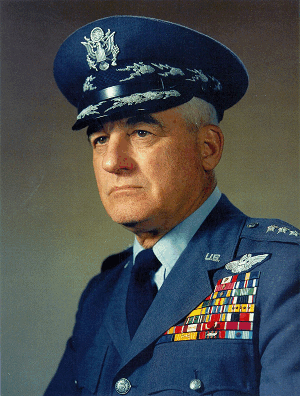 at the considerable expense of current projects and therefore, if directed, should be set up independently of existing projects.” at the considerable expense of current projects and therefore, if directed, should be set up independently of existing projects.”
As head of Air Materiel Command, General Nathan Twining had the contacts to assess the probability of saucers. This chain of information was behind his dogmatic statement that saucers were real (because they were feasible) and it was also behind his statement they could be made. Part of his conviction may have been based on some knowledge of the Schwemmteiche saucer.
In 1950, the flying saucer phenomenon changed. This year saw the introduction of a new saucer type confirmed. These recent reports began only around late 1949/early 1950 and described the saucers as a central dome with a rotating disc around it. The sightings were so clear and close up that this description became our quintessential flying saucer in popular culture and art.
The clearest report was in June 1950 when one was hovering a few hundred feet over a rural road near Kingman, Kansas, and witnessed by a Rev. Ross Vermilion and his passengers. Vermilion had been a B-29 pilot in World War II and knew aircraft identification. When he tried to drive under the flying saucer, it ascended and flew away. As with Vermilion’s encounter, sightings by others this year bore an intriguing correlation to Boeing’s major development and assembly plant in Wichita. Kansas. It would be a legitimate induction to surmise it was Boeing working on such designs. Kingman isn’t far west of Wichita, the center of Boeing’s development and assembly industry in the Midwest.
In fact, this was the summer of such a flying saucer. . . and it was largely an American Midwest phenomenon. On July 11, another was seen over Osceola, Arkansas, in line with Wichita, by the crews of two US Navy aircraft and described as a “World War I helmet.” Most significantly, two were filmed by Nick Mariana over Great Falls, Montana, on August 15, 1950. It is famously known as the Montana Film, and rated highly in early pro-saucer factions as proof that flying saucers exist. He describes them:
As I looked up I saw two silvery objects moving swiftly out of the northwest. They appeared to be moving directly south. The objects were very bright and about 10,000 feet in the air. They appeared to be of a bright shiny metal like polished silver. Both were the same size and traveling at the same rate of speed which was much slower than the jets that shot by shortly after I filmed the discs. Suddenly they stopped. It was then that I remembered my camera in the glove compartment of my car. I raced down the stairs yelling for my secretary, Miss Virginia Ronnick . . . I asked my secretary if she saw anything and she said, yes, two silvery spheres. I unlocked the glove compartment of my car, took out the camera, turned the telephoto lens on the turret into position, set the camera at f-22, picked up the objects in the viewfinder and pressed the trigger. The discs appeared to be spinning like a top and were about 50 feet across and about 50 yards apart. I could not see any exhaust, wings or any kind of fuselage. There was no cabin, no odor, no sound except I thought I heard a whooshing sound when I first saw them. . . 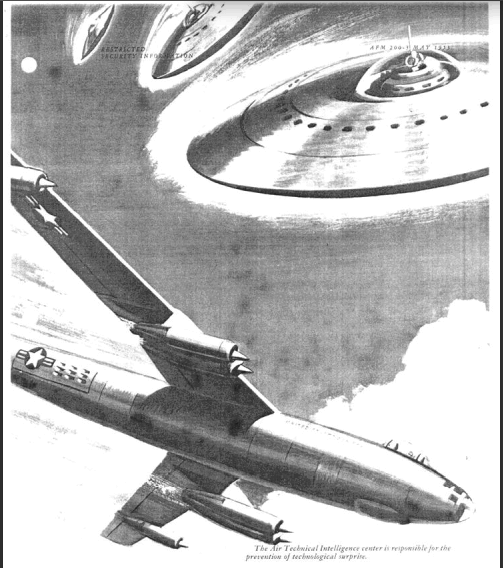
Being that the objects were very bright and at an estimated 10,000 feet altitude, it is not surprising that Mariana did not see a central cabin around which the disc was rotating. Otherwise the description matches those around Kansas and Arkansas earlier in the summer, the direction to which these discs were now traveling. In essence, they were coming from the direction of Boeing in Seattle, stopped over Great Falls to get their bearings, and then headed southeast to Kansas.
They were subsonic, fitting Twining’s statement in his secret memo.
In 1953, Air Technical Intelligence used the illustration as an example of technological surprises from foreign powers. This was contained in AFM 200-3, May 1953. Minus the fanciful glass dome, this approximates what Mariana filmed. The saucer is in three sections, with the central section free to rotate.
This was also the year in which one of these saucers might have crashed in December. While working for the NSA in 1964, W. Todd Zechel was told by a colleague that said colleague’s uncle had been involved in the recovery of a flying saucer in the early days of the phenomenon. This took place somewhere in Mexico, near Laredo on the Texas border. As a civilian in the 1970s, Zechel turned UFO investigator, associated mostly with Ground Saucer Watch and CAUS (Citizens Against UFO Secrecy). He tracked down more witnesses (including the uncle) in the hunt for this saucer. He was able to narrow the date to December 3, 1950. From all of his early writings, he initially believed it was from outer space, and the unraveling of this case became a labor of love. It was a central piece in the famous CAUS lawsuit against the CIA in the late 1970s. Unfortunately, his book never came to fruition. It is the contention here that this was because he came upon the same trail as this present author and discovered the human origins of such saucers. However, this is for another page. Let’s rather go back to 1950 and the established sightings and film above.
Initially, Donald E. Keyhoe, the preeminent UFOlogist, believed such technology was earthly. For Flying Saucers are Real (1950) he speculated these saucers might have been a central dome using a rotating disc with cambered or slotted surfaces and operating basically on the helicopter principle. But such conventional technology would have a very limited altitude. Radar reports indicated the saucers went way too high for anything based on the helicopter principle.
Nevertheless, the descriptions of the dome with the rotating disc seemed undeniable to Keyhoe. This set him on his journey to see what force could be behind this technology. In September 1950 he visited Wilbert Smith, who spoke at great lengths with him. Keyhoe published the conversations in his 1953 book Flying Saucers From Outer Space. In these conversations, Smith lays out the principles of a device to utilize magnetic energy, the description including a power rim, even a rotating disc around the central cabin. He explained how it could fly in the atmosphere and even discussed the various hues of coronal light that would be produced by such a craft at various altitudes. The technology was so well known in his circles that the very recent descriptions of flying saucers had inspired Smith to believe the (alien) saucers must be using this technology to harness the Earth’s magnetic field.
Keyhoe accepted Wilbert Smith’s explanation. He liked it because it was technology that made sense. More importantly, he didn’t believe it could yet have been used by humans. This is what Keyhoe wanted— a rational explanation but not an earthly one. As the title of his book conveys (Flying Saucers From Outer Space), he had decided on their origins.
Wilbert Smith’s trip to Washington DC in 1950 is incredibly valuable in the search for several answers to the UFO problem. During this trip he had his extended conversations with Donald Keyhoe; his detailed explanation for domed saucers with rotating discs inadvertently explains for us an important demarcation point in the UFO phenomenon. They weren’t ovoid discs flitting through the atmosphere as in 1947. They were now quite round/domed and operating on understood though costly principles. Then on September 15, 1950, he also paid a visit to the Department of Defense and spoke briefly with Dr. Robert I. Sarbacher. After he returned to his hotel, he jotted down the notes of the conversation. He did this because the ramifications of what he was told astounded him. His notes were later found in 1979 in Canada, and cleared to a public repository.
Smith had reason to be excited by what Sarbacher had told him. It was the culmination of a year-long build up of events that convinced him he was on the right track by proposing saucers used magnetic energy. The events began on January 6, 1950. The Kansas City Star had reported that a saucer had crashed 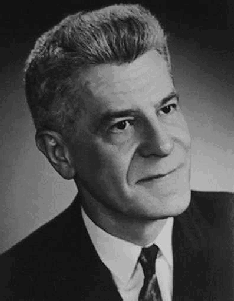 along the “southwest” border and it was a dome with a rotating disc. Then the summer saucer sightings were the clearest— finally consistent and vivid— and each one described the dome with rotating disc. Also in 1950 a book entitled Behind the Flying Saucers proposed that the saucers were propelled by magnetic forces. The assertion carried some weight because the author, Frank Scully, had said three saucers had crashed in February 1948 and he had spoken directly with one of the scientists involved in their recovery. along the “southwest” border and it was a dome with a rotating disc. Then the summer saucer sightings were the clearest— finally consistent and vivid— and each one described the dome with rotating disc. Also in 1950 a book entitled Behind the Flying Saucers proposed that the saucers were propelled by magnetic forces. The assertion carried some weight because the author, Frank Scully, had said three saucers had crashed in February 1948 and he had spoken directly with one of the scientists involved in their recovery.
Wilbert Smith.
Smith was intrigued, obviously. But, of course, Scully was a Variety writer by profession. He couldn’t be taken at face value. So many of the news stories were contradictory and giving the public a huge heehaw about little men from Mars. Most were playing saucer crashes for laughs. However, as one of Einstein’s students Robert Sarbacher was well connected within the applied sciences. The answers Smith got from him on September 15 put a new light on everything that had happened over the year.
Smith said: “I am doing some work on the collapse of the earth’s magnetic field as a source of energy, and I think our work may have a bearing on flying saucers.”
“What do you want to know?” replied Sarbacher.
“I have read Scully’s book on the saucers and I would like to know how much of it is true.”
“The facts reported in the book are substantially correct.”
“Then the saucers exist?”
“Yes, they exist.”
“Do they operate as Scully suggests on magnetic principle?”
“We have not been able to duplicate their performance.”
“So they come from some other planet?”
To this Sarbacher responds: “All we know is, that we didn’t make them, and it’s pretty certain they didn’t originate on the earth.”
For us today, the lasting impact of the above naturally depends on how much Sarbacher really knew of Scully’s book and what he also knew of highly restricted R&D developments. Yet for Smith, the above exchange it was enough to send him hurrying back to his hotel to make notes as verbatim as possible. Everything Sarbacher had said indicated inside knowledge, plus a certainty saucers existed. It also indicated the saucers weren’t manmade. Smith must have been electrified. This one conversation proved he was right to pursue magnetic energy as a propulsive agent and this would duplicate the ET saucers flight maneuvers now flitting over the Earth.
Yet Sarbacher wasn’t an insider in the Research and Development Board of the Department of Defense. He was what was then called a dollar-a-year-man, donating his time and expertise for the good of the country. Otherwise he was involved in his own business ventures. The R&D guys talked a lot about flying saucers and what could be the technology behind them. As time would prove, Sarbacher had been inspired by their conversations and not by direct knowledge.
As a dollar-a-year-man Sarbacher’s belief that he had not yet reproduced such technology also doesn’t have a long reach. Aside from General Nathan Twining’s certainty (already in 1947) that saucer technology was understood in principle, enough documents exist dating to 1950-1952 indicating that government contracted scientists believed that if the saucers were real then they were a revolutionary design, possibly by the Soviets based on captured Nazi engineering.
When Sarbacher said “The facts reported in the book are substantially correct” he meant not crashed alien discs, but that the magnetic propulsion theory was considered feasible. Thus Smith eventually asked: “Is there any way in which I can get some information, particularly as it might fit in with 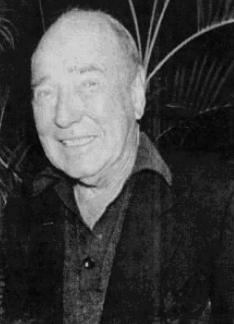 our own work?” our own work?”
And to this Sarbacher responded: “I suppose you could be cleared through your own Defense Department and I am pretty sure arrangements could be made to exchange information. If you have anything to contribute we would be glad to talk it over, but I can’t give you any more at the present time.”
Dr. Robert Sarbacher in later life.
What is implied by Sarbacher is that from all the R&D chat, he believed the magnetic propulsion theory was feasible. This technology must have been considered very important within the US military.
Smith obviously had been hearing rumors. “I understand the whole subject of saucers is classified,” he said.
“Yes, it is classified two points higher than the H-bomb,” confirmed Sarbacher. “In fact, it is the most highly classified subject in the U.S. government at the present time.”
“May I ask the reason for this classification?”
“You may ask, but I can’t tell you.”
Sarbacher’s reply sounds very provocative, but decades later he qualified his answer. When he said ‘I can’t tell you’ he said he probably meant he didn’t know why.
But what flying saucers were classified? The statements within the conversation above have always been taken to mean a study of those being seen in the air rather than the development and employment of such technology.
It is the contention here that the classification was over their development. As a dollar-a-year-man, Sarbacher could not possibly have been aware of the level of top secret developments by actual contracted scientists under the Department of Defense. The sightings of the domed saucer with rotating disc pivot around Boeing’s major installation in Wichita and ripple out from there. The pattern and chronology of sightings can only induce the theory they had the top secret contract to develop and test one. It may not have performed much at all, but because it was only capable of subsonic speeds it was easily describable by witnesses, then filmed over Great Falls. When put together by Smith, this rash of incidents in 1950 inspired him to develop the obvious theory of magnetic energy behind the saucers.
Through Smith the magnetic propulsion theory went to Keyhoe during that same visit to Washington D.C. in September 1950. Over a period of two weeks they had extensive conversations while Smith was representing Canada on international wavelength allocation. Keyhoe had been fascinated by Fernand Roussel’s work and had referred to his paper in his first book Flying Saucers Are Real, but “after the storm raised by Scully’s electromagnetic explanation I’d stopped giving it serious thought.”
Smith was more than ready to change Keyhoe’s mind and qualify how it could work. (also, his previous conversation with Sarbacher seems reflected in his certainty with Keyhoe that saucers are real.) “And I think their appearance is what suddenly increased your government’s interest in space travel and an artificial satellite. Judging 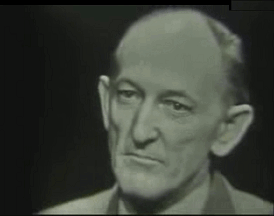 from our own operations, I’m sure your government also is vitally concerned with learning the secret of propulsion.” from our own operations, I’m sure your government also is vitally concerned with learning the secret of propulsion.”
Donald Keyhoe— he was less an investigator and more of a gadfly of a phenomenon. He talked with many people who could give body to the ET hypothesis. He also related the latest saucer reports dramatically, as if the phenomenon was coming to a breathtaking crescendo. He firmly believed saucers were from outer space and always interpreted all data to support that.
From the recent descriptions of domed central cabins with rotating outer discs, Smith was certain the saucers operated on “magnetic fields of force.” In essence, their technology was limited to and depended on the Earth’s magnetic field, but they would not be good for long range space travel. Instead of suspecting they might indeed be US technology, he proposed a bold theory. He told Keyhoe he believed the saucers were from outer space, launched from mother ships in orbit.
The basic premise is that it is possible to produce a magnetic ‘sink’ [the name arbitrarily chosen by Smith and his engineers] within the earth’s field; that is, a region into which the magnetic flux will flow at a controlled rate, giving up some of its potential energy in the process. Such a ‘sink’ would have many interesting properties, such as the following:
1. Electrical power could be obtained from the collapse of the earth’s magnetic field into the ‘sink.’
2. Powerful reaction forces could be developed in a conducting ring surrounding the sink and offset from it, sufficient to support a suitably designed ship and to propel it.
3. If the rate of flow of magnetic flux is modulated, the resulting magnetic disturbances could be used for communication purposes.
It is curious to note that most of the descriptions of flying saucers are in accordance with the design which would be necessary to exploit the properties of a magnetic sink. . .
As Smith continues he also clearly (from our vantage point now) discusses many aspects of Lightcraft type devices. He continues:
If the circulating current is sufficiently large and the cooling of the disc is inadequate, it may become red or even white hot, which is in line with several reported observations. Also, under certain conditions of operation, a very high voltage may be built up between the center and the rim of the disc, which could result in a corona discharge through the surrounding air, if the saucer were at a sufficiently high altitude. Such a discharge would resemble the Northern Lights but would be very much more i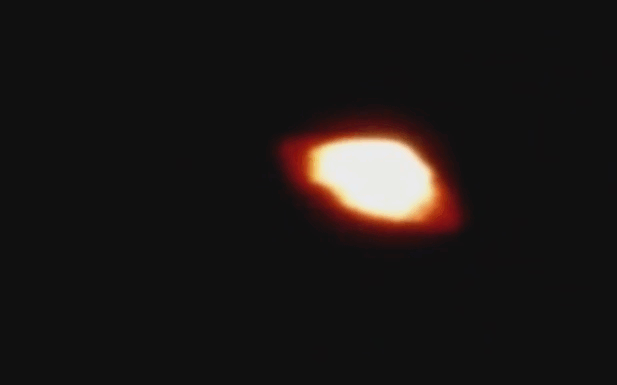 ntense. This also seems to be confirmed by observations. ntense. This also seems to be confirmed by observations.
October 21, 1965, deputy sheriff Art Strauch’s photo of a domed saucer with a spinning disc. It mirrors what Smith explained in 1950. The operation of this craft over the midwest in 1965 was significant in feeding the Great Flap of 1965-1967.
Later, in another conversation, Keyhoe brought up his consternation about the UFOs’ glowing auras. “If the reports are right,” puzzled Keyhoe, “they’re every color of the rainbow. And pilots say they sometimes appear suddenly, or blink out like a light bulb when it’s switched off. It just doesn’t make sense to me.”
“I think I can clear it up,” replied Smith.
Most of the effects are caused by the disc’s rotation, though sometimes a corona discharge is the cause. In the first place, probably many discs aren’t seen at all, especially at night. If they’re not heating up from rotation, and there’s no corona discharge, you wouldn’t see one unless it was caught in a searchlight beam or you saw its metal surface shining in the moonlight.
. . .Now let’s assume a rotating ring begins to speed up, so that it overheats from its movement through the magnetic field. At first, out of the darkness, you’d see a pale pink— if the speed-up was not too rapid. Then the color would brighten to red, orange-red, through yellow to the glow of white-hot metal. If you slowly heat any metal you’ll see the same changes.
. . .Now if the ring’s rotation was very swiftly accelerated, the human eye couldn’t catch the rapid changes. It would go from red to white too quickly. The same holds true when the rotation is reduced. If the slowing is gradual, you’ll see the various stages as the saucer turns yellow, orange, red, pink, and finally becomes dark. But if the rotation were abruptly slowed or stopped, the cooling effect of the air, especially at high speed, would be very swift. You could get the impression that the light had actually been turned off.

What Strauch saw through binoculars. It is essentially in principle the same as the illustration in the restricted AFM 200-3. It is a saucer in 3 parts— stationary dome and rim with rotating disc in between. Rim and dome are held together by the struts. The disc rotates freely under the arches. The widest strut in front contains an air scoop. In the AFM 200-3 saucer, the rotating section is slotted, and this takes the place of the air scoop.
. . .Those colors come from the corona effect. Under certain atmospheric conditions you’ll get the Northern Light colors. At different heights a certain shade would predominate. For instance, at relatively low altitudes, any corona discharge would be very short in length and you’d see more of a blue-white color. Somewhat higher, it would be green, or bluish green. Higher still, you might see all the normal corona colors— red, yellow, blue, and green.
. . .Ordinarily a bright red or white glow would nullify it. But if the rotation speed was only moderate, you might get a reddish color tinged with blue. Higher up, you’d be more likely to see a red shade, from heating, tinged with green or bluish green. It would most likely be a rather hazy effect instead of precise colors. In the majority of cases, however, you could expect just the red-orange-white range, and the reports bear that out.
Wilbert Smith wasn’t wrong. He was cart-before-the-horse. A very understandable technology starts being introduced in UFO reports in 1950. The inference of qualified scientists like Smith was correct. But his interpretation they were alien craft is without proof. The technology was so recognizable that Smith could explain it, and by his own admittance it was limited to the Earth.
Smith also had warned Keyhoe about the dangers that such discs could cause power blackouts.
“There is an area of possible danger.” Smith reached for a pencil, sketched a rotating disc, then roughly outlined a city beneath it. “With a disc 100 feet in diameter, for instance, there will be two fairly large fields of magnetic force around it while it’s in operation. If it were to fly low over this city—let’s say at 500 feet— eddy currents would be induced in power lines and metal surfaces. It could blow fuses, perhaps even burn out wires. The danger zone might even be larger; possibly it would extend for a thousand feet. I believe it’s the main reason discs have avoided flying low over inhabited areas.”
That this technology would not enter the mainstream of aerospace and aviation can easily be seen in Smith’s own caution: these craft would generate such radiation that he didn’t believe they could be manned. These were drones sent out by the alien mother ships.
However, behind the scenes advances were being made that perhaps Smith knew nothing about. One such advance is a Faraday Cage, and today it is reported that B-2 pilots sit in one to protect themselves and their electronics from some of the technology in use in the overall design of the otherworldly bomber.
Due to its cost, Twining had recommended that saucer technology be developed quite independent of all other R&D projects. By 1949 there are reports of domes with rotating discs. By 1950 we get the first close-up reports of them. By 1957 we get reports of capsules with power rims, and this brings us closer to the known design of Lightcraft. By February 1957 a squadron of what match Lightcraft devices was certainly in operation near Lockheed’s skunk works in Burbank. By November, one of the witnesses in Levelland draws a sketch that resembles the known design of a Lightcraft bell as being the “UFO” that set down on the road and caused the flurry of national interest.
The above chronology is awfully quick for any government or private industry developments. Ten years to produce Lightcraft is believable. But the dome with rotating disc is out there in 1949 already. The only way to explain this is that there was a “proof of principle”— an actual working saucer known to exist by military intelligence. Rumors and then news reports from the earliest moments of the saucer phenomenon stated the Nazi’s had been working on such designs and that saucer reports reflected allied powers testing designs and models they had secretly captured and taken back as war booty. In our search for the answers to UFOs, we too have to go back to the dark days of Germany. We have to consider they were speaking about the Schwemmteiche Saucer.
|